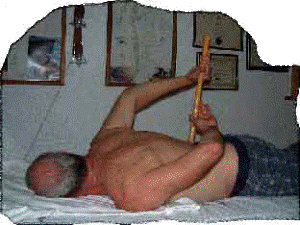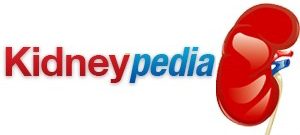
Renal colic carries the ICD 9 code 788.0.
Renal colic is pain that comes from kidney stones. The pain circulates from the abdomen to the groin and back. It may be moderate to severe, and may be dull or sharp and acute. In its acute form, renal colic has been described as one of the worst pains human flesh can suffer.
Symptoms
Renal colic is itself a symptom rather than having symptoms. The cause of renal colic is renal calculi or kidney stones. The nature of the kidney stone does much to determine how the pain manifests. Sometimes the pain is constant.
Sometimes it comes in waves, following the rhythm of ureteric peristalsis (the muscular movement that propels urine down the channels from the kidneys to the bladder). It may be strongest either near the bladder area, or nearer the kidneys, or it may be felt equally in both parts of the body.
Cause
The cause of renal colic is kidney stones. The underlying causes of kidney stones vary. These causes include urinary tract infection, several small intestine disorders, inflammatory bowel disease, dehydration, gout, and complications of surgery. Dietary factors may underlie many of these causes.
CT Scan
A CT scan is the most reliable way to diagnose kidney stones. Other forms of medical imaging such as an ultrasound may work, but the computerized scan of X-
In some cases, pain that is similar to renal colic can occur from some other cause than kidney stones. Strictly speaking, this pain is NOT renal colic, since renal colic is defined as arising from kidney stones, but it can feel much the same. A CT scan, by eliminating kidney stones as the cause, can also eliminate renal colic as the diagnosis and allow more appropriate diagnosis and treatment. This is, of course, especially important when the pain arises as a result of a serious condition.
Treatment Of Renal Colic
Treatment of renal colic always involves, at a minimum, managing the pain. It may or may not require treatment for the underlying kidney stone condition. Often the pain can be managed by over the counter analgesics such as acetaminophen (Tylenol). For more severe pain that doesn’t respond well to minor analgesics, opioid drugs may be prescribed. The patient’s condition is monitored to make sure the kidney stone
passes naturally. This usually is enough with kidney stones measuring less than 4 millimeters in diameter.
With larger kidney stones, treatment to facilitate passage may be necessary. The simplest, least invasive such treatment is ultrasonic lithotripsy, which is the use of focused ultrasound bursts to shatter a kidney stone and allow the pieces of it to pass out of the body. More invasive surgical procedures may be required for stones that are either too large or positioned badly for use of sonic lithotripsy. This can range from laser lithotripsy using a scope, to full conventional surgery employing an incision into the kidneys to remove the stone. Since more invasive procedures involve a longer recovery time and greater chance for complications, they are not preferred where less intrusive methods will suffice.
Renal Colic And Pregnancy
As a complication of pregnancy, renal colic and kidney stones presents complication in that some treatments are not advised. This includes ultrasonic lithotripsy, which can damage a developing fetus. Conservative treatment using pain management suffices for most kidney stones. A surgical stent may be necessary when pain management alone is inadequate. In all cases, pregnant women suffering from kidney stones require even more careful monitoring than kidney stone patients generally.
